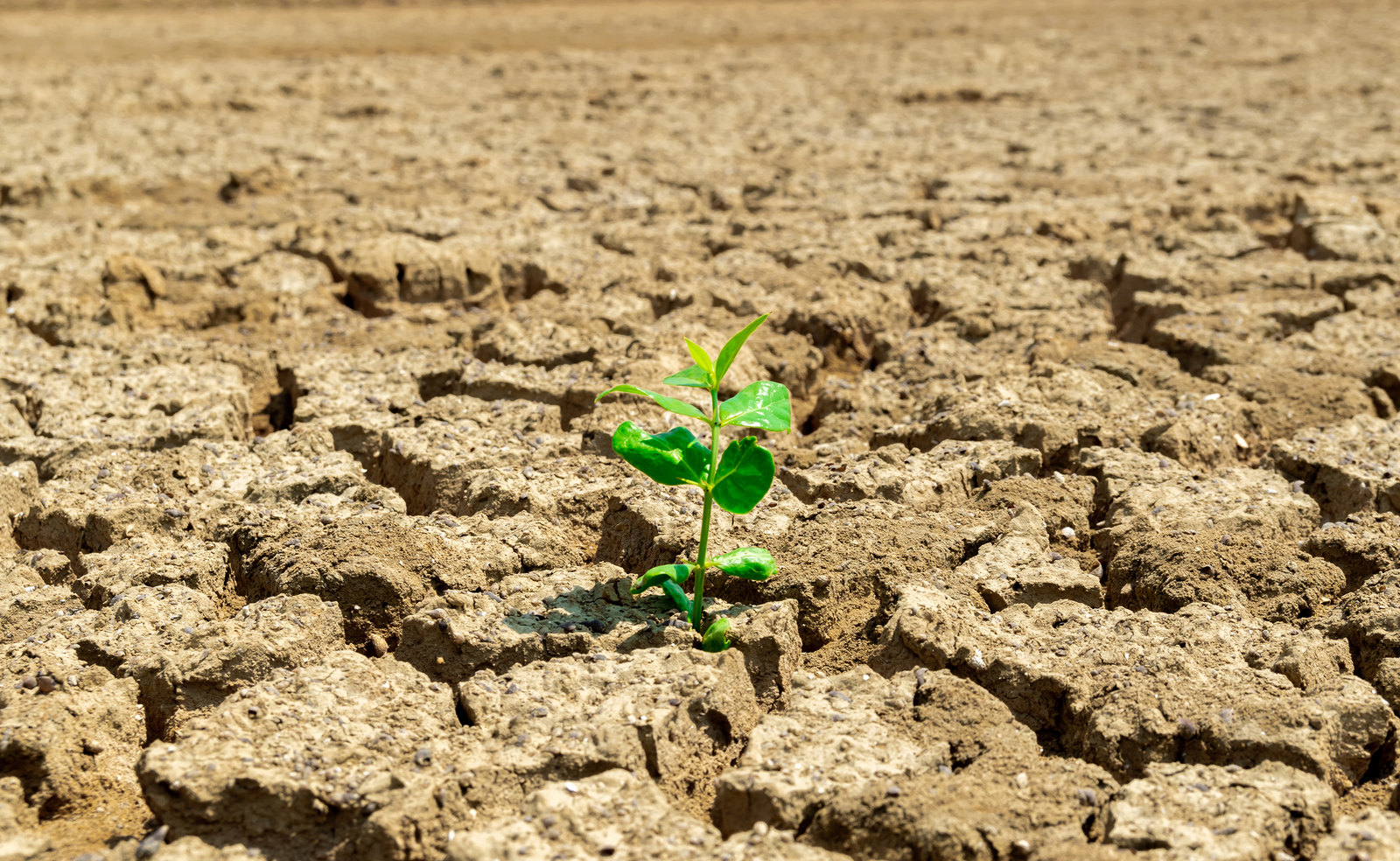Abiotic Stress - The Role Of Melatonin In Protecting Plants From Abiotic Stress
Abiotic stress conditions like heat, salinity, and decreased water availability can have a devastating impact on plant growth and productivity, leading to yield losses in agriculture and the collapse of entire ecosystems. To withstand harsh environmental conditions, plants evolved perception, signaling, and acclimation mechanisms that reduce growth and yield.
Author:Karan EmeryReviewer:James PierceAug 15, 20229 Shares268 Views

Abiotic stressconditions like heat, salinity, and decreased water availability can have a devastating impact on plant growth and productivity, leading to yield losses in agriculture and the collapse of entire ecosystems.
To withstand harsh environmental conditions, plants evolved perception, signaling, and acclimation mechanisms that reduce growth and yield.
The severity of these abiotic stresses is increasing as a result of rapid climate change, necessitating appropriate action.
Plant growth regulators, osmolyte synthesis, and accumulation prevent stress-induced damage and maintain cellular homoeostasis and plant growth.
Melatonin (MT), one of these molecules, is critical for regulating plant growth in stressful situations. It is a pineal molecule that was found in the pineal glands of cattle.
Abiotic Stress And Plant Growth
Abiotic stresses have a significant impact on plant productivity. Abiotic stresses reduce crop survival, biomass production, accumulation, and yield.
Drought and salinity affect at least 20% of arable land and 40% of irrigated land. It's thought that salinity has an impact on about one-third of irrigated land.
As cellular aqueous and ionic equilibriums are disturbed, plant physiology and biochemistry vary.
Low precipitation, high surface evaporation, weathering of native rocks, deposition of oceanic salts in wind and rain, saline water irrigation, and poor agricultural practices lead to salinization of agricultural land.
The UN Environment Program estimates that 20% of agricultural land and 50% of cropland are salt stressed, and salinized areas are growing 10% annually.
Melatonin Biosynthesis In Plants
Tryptophan (TTP) originates from the shikimic acid pathway in the MT biosynthesis pathway. TTP serves as an indole-3-acetic acid (IAA) precursor as well. Four different enzymes convert TTP to MT.
Initially, the enzyme tryptophan decarboxylase (TDC) changes TTP into tryptamine. Then, the enzyme tryptamine 5-hydroxylase (T5H) converts tryptamine into serotonin. Plants produce serotonin through these two processes.
Tryptophan is converted to 5-hydroxytryptophan by tryptophan 5-hydroxylase (TPH) in some plants. Serotonin is then produced by tryptophan decarboxylase (TDC) or aromatic L-amino acid decarboxylase (AADC).
Arylalkylamine N-acetyltransferase (AANAT) or SNAT converts serotonin into N-acetyl-serotonin at this point.
SNAT converts tryptamine to N-acetyl-tryptamine, whereas T5H is unable to convert tryptamine to N-acetyl-serotonin.
The final step entails using either hydroxyindole-O-methyltransferase (HIOMT) or N-acetyl-serotonin methyltransferase (ASMT) to transform N-acetyl-serotonin into MT.
Additionally, 5-methoxytryptamine can be produced from serotonin by HIOMT and MT by SNAT.
Melatonin - The Stress Protectant
Reactive oxygen species (ROS) can be removed by the potent antioxidant melatonin, which also lessens stress.
Its exogenous application enhances abiotic stress responses and plant physiology and biochemistry.
It increases stress tolerance and the production of protein accumulations, RuBisCO activity, and chlorophyll.
MT activates stress-related signaling pathways.
We briefly touched on the topic of MT-mediated tolerance in plants to abiotic stresses.
Plant Salinity Tolerance Is Increased By Melatonin
Salt stress severely restricts crop growth and development and puts the world's food supply in danger.
The main effects it has on plants are osmotic stress, ionic and nutritional imbalance, and ROS, which significantly reduce plant growth.
To achieve agricultural sustainability, many plant growth regulators (PGR) around the world reported increasing salt tolerance.
By lowering photosynthetic efficiency, salt stress decreased crop productivity.
Stomata closing and the detrimental impact of salinity on photosynthetic parameters can both result in decreased photosynthetic efficiency.
However, PS-II's efficiency for both photochemical and non-photochemical quenching was significantly enhanced by MT application, favoring a rise in photosynthetic efficacy under salt stress.
Plants Develop A Tolerance To UV Radiation Due To Melatonin
Since the ozone layer is rapidly depleting, ultraviolet (UV) radiations pose a serious threat to crop production and are becoming more intense over time.
The negative effects of UV can be significantly reduced by MT.
According to reports, the use of MT significantly facilitated UV-induced DNA damage and UV radiation-induced ROS in Nicotiana sylvestris and Malus hupehensis.
To increase UV resistance, MT functions as a potent antioxidant and controls the expression of various UV signaling pathways, including the ubiquitin-degrading enzyme COP1, transcription factors HY5, HYH, and RUP1/2.
The expression of COP1, HY5, HYH, and RUP1/2 is enhanced by MT supply and these genes are important for UV-B signaling.
As a result, it controls the antioxidant defense mechanisms of plants to shield them from the harmful effects of UV-B stress.
Plants With Melatonin Avoid Drought
Another important abiotic stressor that significantly reduces crop growth and global food production is drought.
Since there is less water available, plant physiological processes are severely altered, which results in significant yield losses.
Plants may be tolerant of various stress conditions, including drought stress, thanks to melatonin, a potential PGR.
The plant's ability to withstand drought conditions is enhanced by the regulation of numerous physiological, biochemical, and molecular processes by the hormone melatonin.
The primary processes regulated by MT under drought stress are antioxidant defense systems and photosynthetic process regulation.
Melatonin shields the photosynthetic system from the effects of drought, increasing the efficiency of photosynthetic activity.
Melatonin Adapts Plants To Cold
Plants are also severely harmed by cold stress, which also severely restricts crop growth and production.
Plants are significantly altered physiologically, molecularly, and metabolically by cold stress, which also affects antioxidant activity and membrane permeability.
MT application increased ROS scavenging through increased antioxidant activities, which improved Bermuda grass' ability to withstand cold temperatures.
Similarly, spraying rice seedlings with 0, 20, or 100 μM MT prevented ROS MDA accumulation and increased PS-II efficiency.
Lower MT concentrations (10 and 30 μm) improved root, shoot, and biomass growth. Applying MT upregulated cold-responsive genes (COR15a) and antioxidant genes (ZAT10 and ZAT12), increasing cold tolerance.
In pea plants, MT supply reduces cold-induced photosynthetic efficiency by increasing antioxidant potential and redox homoeostasis.
Foliar spray of 200 μM MT alleviates cold-induced growth suppression by improving stomatal conductance, photosynthetic efficiency, PS-II quantum yield, and reducing MDA accumulation by increasing CAT, POD, and SOD activities and the expression of antioxidant genes CmSOD, CmPOD, and CmCAT.
Melatonin Makes Plants Heat-Tolerant
Heat stress (HS) restricts plant growth, reduces crop yield, and is the biggest threat to food security in this century.
Therefore, plant growth regulators are needed to protect plants from stress.
MT application reduces the negative effects of HS and increased growth under HS in various crops.
Supplementing with MT maintains photosynthesis under HS and promotes growth.
In kiwifruit, MT application improved photosynthesis under HS by modulating carbon fixation.
MT-treated seedlings had increased HS tolerance due to modulated antioxidant, osmoregulatory, and methylglyoxal detoxification.
Melatonin Helps Plants With Waterlogging
In regions with poor drainage and heavy rains, waterlogging has an impact on crop survival, growth, and production.
Waterlogging hinders plant growth and development and produces ROS and anaerobic conditions.
MT controls plant development and growth under stress because it is an antioxidant.
For increased water-logging tolerance, exogenous MT supplementation increased antioxidant activities and decreased MDA and H2O2 buildup in tomato, pear, and alfalfa.
The growth, physiological traits, photosynthetic efficiency, chlorophyll content, leaf polyamine content, and MDA and ROS accumulation of six alfalfa weeds grown in 100 mM MT were all improved.
MDA and ROS accumulation were also decreased.
Melatonin Helps Plants Tolerate Ozone
A highly oxidizing pollutant that is harmful to plant growth and development is ozone (O3).
Although its O3-reduction mechanism is poorly understood, MT is essential for plants to respond to abiotic stresses.
Crosstalk between MT and plant growth regulators lowers stress; for instance, MT modulated ethylene signaling and biosynthesis in grape leaves grown in O3.
While MT inhibits ethylene gene expression, O3 promotes it. In O3, MT increased antioxidant and photosynthetic activity.
Acetylserotonin methyltransferase gene VvASMT1 overexpression reduced ethylene biosynthesis and alleviated O3 stress.
Melatonin Helps Plants Withstand Nutrient Deficiency
Nutrient deficiency is exacerbated by extensive agricultural practices and is predicted to worsen.
A great chance exists for MT to mitigate the effects of nutrient deficiency.
For example, MT supplementation significantly increases the iron (Fe) concentration in roots and shoots while lowering Fe deficiency.
In a different experiment, adding MT to wheat plants increased their resistance to potassium stress (K).
Due to MT's increased expression of the K transporter 1 (TaHAK1) gene and increased K absorption, potassium stress deficiency was lessened.
Melatonin Reduces Heavy Metal Stress In Plants
Heavy metals threaten food production globally. Due to anthropogenic activities, their concentration in agricultural soil is rapidly rising.
Although the role of MT in controlling plant growth when exposed to various HMs has been extensively studied, MT-mediated growth regulation is largely dependent on MT application rate, heavy metal concentration, and plant species.
For instance, 1 μM MT significantly increased growth and antioxidant activities in soybean grown under Al-stress (50 μM) compared to 100μM and 200 μM MT.
Similar results were observed for red cabbage plants grown under Cu stress, where 10 μM MT supplementation compared favorably to 100 μM in terms of growth.
On the other hand, tomato plants exposed to Cd stress (100 μM) grew noticeably more quickly when exposed to 100 μM MT than they did at lower rates.
In comparison to controls, MT application also reverses lead-induced cell death, morphological deformation, and membrane leakage in stressed plants.
An Approach To Abiotic Stress Using Systems Biology
In the post-genomic era, thorough analyses utilizing three systematic omics approaches have improved our understanding of the intricate molecular regulatory networks linked to stress adaptation and tolerance.
The first one is "transcriptomics," which examines the expression patterns of coding and noncoding RNAs.
The second one is called "metabolomics," and it refers to a powerful tool that can analyze a large number of different metabolites.
The third one is called "proteomics," and it offers an understanding of regulatory networks that has never been seen before thanks to the protein and protein modification profiles.
A proteomics approach was used to examine protein complexes involved in signaling.
As abiotic stress signaling studies are made easier with the integration of various omics analyses, more reliable molecular targets for upcoming biotechnological applications in crops and trees can be identified.
Melatonin Biosynthesis Engineered To Reduce Abiotic Stress
Melatonin is a hormone that plants naturally produce to protect them from stressful situations.
In order to reduce the effects of abiotic stresses, endogenous MT must be elevated. To increase endogenous MT levels, the transgenic method is helpful.
However, in a few crops, over-expression of MT responsive genes is being studied in response to various abiotic stresses.
Numerous studies found that under stressful circumstances, MT levels significantly rose.
The overexpression of certain enzymes, such as AANAT and HIOMT, in tomatoes under drought stress led to an increase in endogenous MT levels.
Increased MT levels improve the plant's ability to grow, adapt to change, and withstand pesticides and drought.
For instance, increased expression of the FIT1, FRO2, and IRT1 genes in Arabidopsis following the application of MT helped to correct the Fe deficiency.
In a different study, over-expression of the ASMT gene led to higher levels of endogenous MT, higher levels of HSP expression, and the induction of HS tolerance.
Increased COMT1 transcription factor activity increased MT biosynthesis and Cd resistance in tomatoes with overexpressed HsfA1a.
Chloroplast caffeic acid O-methyltransferase (COMT) overexpression in rice increased MT and enhanced seedling growth in stressful conditions.
People Also Ask
How Do Plants Handle Abiotic Stress?
According to recent studies, plants use communication between their chloroplasts and nuclei to withstand stress or damage from various sources.
Through this communication, plants control the expression of their genes, enabling them to respond to various types of stress and damage.
Why Do Plants Get Abiotic Stress?
Stress affects plants. Their physiology is affected by environmental factors like drought or a lot of salt in the soil.
Under stressful circumstances, all land plants, including liverwort and rye, use a sophisticated signaling cascade.
What Is The Importance Of Biotic And Abiotic Stress On Plant Breeding?
The loss of significant crop plants due to abiotic stress (such as temperature, ultraviolet radiation, salinity, floods, drought, heavy metals, etc.) outweighs the damage caused by biotic stress (such as damage from insects, herbivores, nematodes, fungi, bacteria, or weeds).
What Is Abiotic In Plants?
Abiotic diseases, also known as non-infectious diseases, are brought on by external factors like the environment, soils, chemicals, or mechanical injuries.
These frequently happen when plants are grown outside of their natural habitat or growing zone or when people disturb the environment in which a plant grows.
Conclusion
Melatonin can significantly boost a plant's resistance to the damaging effects of abiotic stress.
Melatonin is able to affect a wide range of biochemical, molecular, and physiological processes, which in turn assists plants in better coping with the effects of stress.
MT boosts the efficiency of photosynthesis while also protecting the photosynthetic machinery from the oxidative damage that can be caused by stress.
Melatonin also increases cell signaling, which regulates a wide range of physiological and molecular processes in plants and confers resistance to stress.
The application of MT under different stresses resulted in a reduction in the production of reactive oxygen species (ROS).
This was accomplished through the activation of antioxidant enzymes, the accumulation of compatible solutes, and the increased expression of stress-responsive genes.
However, in order to provide answers to a number of questions, a number of different studies need to be conducted.
Jump to
Abiotic Stress And Plant Growth
Melatonin Biosynthesis In Plants
Melatonin - The Stress Protectant
Plant Salinity Tolerance Is Increased By Melatonin
Plants Develop A Tolerance To UV Radiation Due To Melatonin
Plants With Melatonin Avoid Drought
Melatonin Adapts Plants To Cold
Melatonin Makes Plants Heat-Tolerant
Melatonin Helps Plants With Waterlogging
Melatonin Helps Plants Tolerate Ozone
Melatonin Helps Plants Withstand Nutrient Deficiency
Melatonin Reduces Heavy Metal Stress In Plants
An Approach To Abiotic Stress Using Systems Biology
Melatonin Biosynthesis Engineered To Reduce Abiotic Stress
People Also Ask
Conclusion

Karan Emery
Author

James Pierce
Reviewer
Latest Articles
Popular Articles


